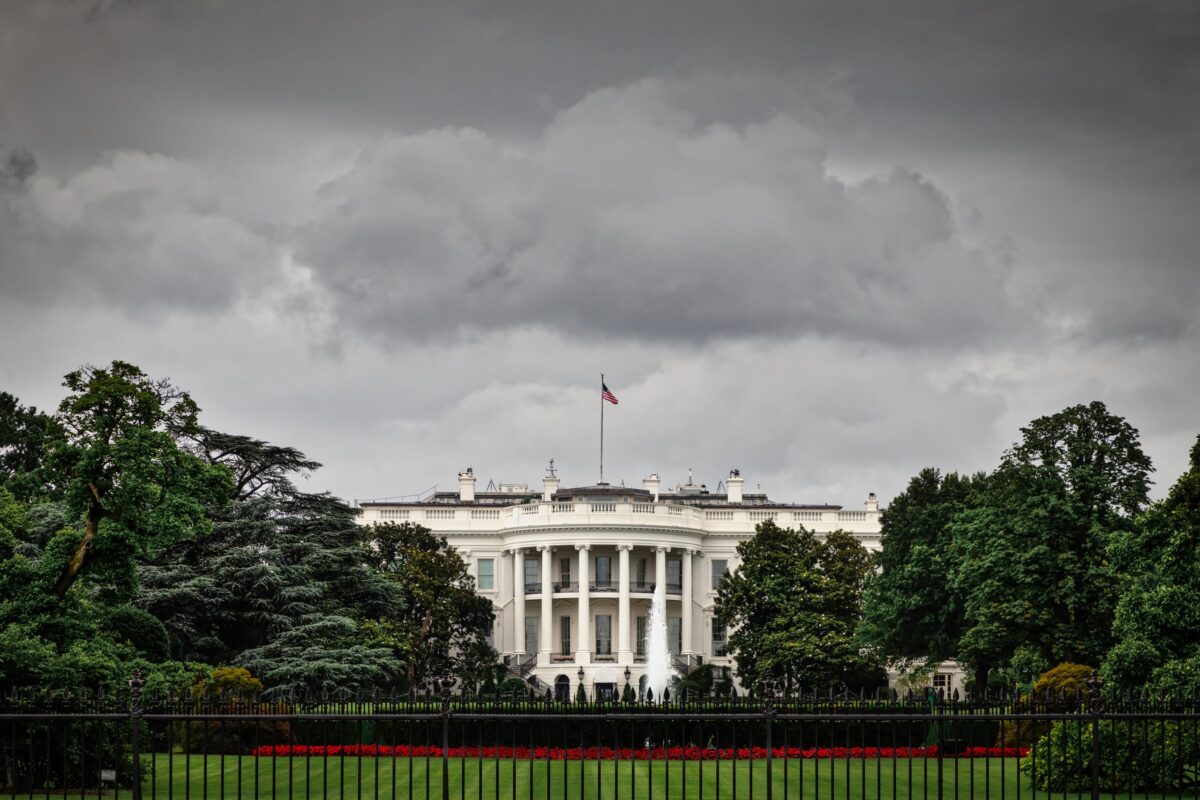- US and UK equity markets have, on average, done well on a two-year view following the first interest rate cut of a cycle
- Performance in the first year can be patchy (as markets have already priced in the move)
- There are two glaring exceptions to the average positive outturn (2000-03 and 2007-09)
- The reasons for the rate cut may be just as important as the direction of travel
“A third consecutive interest rate cut from the Bank of Canada continues the trend toward lower headline borrowing costs, at least in the West, and the number of rate cuts this year already exceeds the total of 2022 and 2023 combined,” says AJ Bell Investment Director Russ Mould. “The US Federal Reserve is dropping very unsubtle hints that it will be joining in at the next meeting of the Federal Open Markets Committee on 18 September, but markets seem to be getting edgy the nearer the first US cut gets, and perhaps with good reason, if prior rate cutting cycles are any guide.
“At first glance, a first cut in the Target Fed Funds rate since March 2020 seems to be in keeping with the core narrative that is doing so much to boost equity and Government bond markets alike, namely that inflation will cool, economies will enjoy a soft landing (if indeed there is any landing at all in the USA) and that central banks will therefore be able to cut the headline cost of money.
Source: Bank of England, US Federal Reserve, CME Fedwatch, LSEG Refinitiv data
“Those rate cuts are in turn expected to stimulate demand for credit and thus economic activity, boost corporate earnings and cash flows thanks to higher demand (and lower interest bills) and persuade investors to take more risk, with asset classes such as equities, as the yields available from cash and fixed-income decline.
“Such a scenario sounds very beguiling, especially as faith in the US Federal Reserve’s ability (and willingness) to support stock markets dates back to when then-chair Alan Greenspan waded in with a pair of quick-fire interest rate cuts and a $3.6 billion bail-out plan in the wake of Russian debt default and the collapse of Long-Term Capital Management hedge fund in 1998. That set the scene for another leg-up in the 1990s US equity bull run. Since then, central bankers have responded with interest rate cuts, quantitative easing and other unconventional tools and interventions to the Great Financial Crisis of 2007-09, the European debt crisis of the 2010s, dislocations in the American inter-bank lending markets in 2019, the pandemic in 2020 and a US (and Swiss) banking wobble in 2023.
“You can justify this faith in policymakers, too, by looking at the average returns from stock markets after the initial rate cut.
“To start with the UK, the good news is that over the thirteen rate-cut cycles since the inception of the FTSE All-Share in the early 1960s, the index has made an average gain of 16% in the two years after the first decrease in borrowing costs.
| Bank of England rate cutting cycles: performance of FTSE All-Share | |||||||
| Before first rate cut | After first rate cut | ||||||
| Period | 1 year | 6 months | 3 months | 3 months | 6 Months | 1 Year | 2 years |
| 1965-1967 | 0.2% | (1.3%) | (3.5%) | 6.1% | 12.1% | 3.9% | |
| 1968-1971 | 30.9% | 13.3% | 1.6% | 19.1% | 30.7% | 26.4% | 10.5% |
| 1974-1976 | (32.2%) | 43.5% | 92.8% | (16.6%) | (30.3%) | (57.3%) | 10.5% |
| 1976-1977 | (17.0%) | (21.8%) | (13.0%) | 25.4% | 46.8% | 64.1% | 64.1% |
| 1980-1984 | 8.8% | 18.9% | 11.9% | 6.7% | 7.2% | 17.9% | 16.6% |
| 1985-1988 | 20.2% | 18.9% | 7.4% | (1.9%) | 0.3% | 30.2% | 59.9% |
| 1990-1994 | (8.2%) | (4.0%) | (8.3%) | (4.5%) | 15.8% | 18.5% | 13.3% |
| 1995-1996 | 21.8% | 8.7% | 1.6% | 1.4% | 5.7% | 9.0% | 33.0% |
| 1998-1999 | (11.8%) | (22.9%) | (22.7%) | 27.8% | 35.5% | 33.0% | 40.8% |
| 2001-2003 | 0.9% | 13.2% | (2.3%) | (5.1%) | (11.7%) | (17.3%) | (42.0%) |
| 2007-2009 | 4.6% | (4.7%) | 0.8% | (10.1%) | (8.6%) | (38.8%) | (19.8%) |
| 2016-2017 | 0.2% | 12.9% | 8.9% | (0.5%) | 6.8% | 12.4% | 14.9% |
| 2020 | (13.7%) | 0.6% | (8.0%) | (0.6%) | (0.6%) | 13.5% | 3.8% |
| 2024- ? | 8.7% | 9.2% | 2.9% | ||||
| AVERAGE | 0.9% | 6.1% | 5.2% | 2.9% | 8.0% | 9.5% | 16.1% |
Source: LSEG Refinitiv data, Bank of England
“The two-year post-cut performance from the S&P 500 is similarly compelling, on average.
| US Federal Reserve cutting cycles: performance of S&P 500 | |||||||||
| Before first rate cut | After first rate cut | ||||||||
| Period | 1 year | 6 months | 3 months | 3 months | 6 Months | 1 Year | 2 years | ||
| 1971 | 1.1% | 24.3% | 10.2% | 10.1% | 8.6% | 11.7% | 29.7% | ||
| 1974-1976 | (10.8%) | 21.8% | (9.7%) | (23.5%) | (20.3%) | (8.1%) | (0.1%) | ||
| 1981-1982 | 8.4% | (5.1%) | (4.2%) | (5.4%) | (7.3%) | (16.4%) | 30.7% | ||
| 1984-1986 | 2.5% | 6.1% | 10.8% | (1.8%) | 8.8% | 13.2% | 51.8% | ||
| 1989-1992 | 21.4% | 15.5% | 10.0% | 7.7% | 7.5% | 12.6% | 18.3% | ||
| 1995-1998 | 24.2% | 20.3% | 9.5% | 5.1% | 11.3% | 18.7% | 65.5% | ||
| 2001-2003 | (7.4%) | (8.3%) | (5.5%) | (17.9%) | (8.4%) | (13.5%) | (32.6%) | ||
| 2007-2008 | 15.0% | 9.6% | (0.7%) | (4.3%) | (12.4%) | 2.0% | (29.7%) | ||
| 2019-2020 | 5.0% | 4.7% | 1.0% | 3.8% | 9.2% | 10.8% | 48.8% | ||
| 2024? – ? | 25.6% | 8.6% | 1.9% | ||||||
| AVERAGE | 8.5% | 9.7% | 2.3% | (2.9%) | (0.3%) | 3.4% | 20.3% | ||
Source: LSEG Refinitiv data, US Federal Reserve
“However, the key words here are ‘on average’ and investors may need to be a little careful about what they wish for with regard to monetary policy for three reasons, even if the FTSE All-Share and S&P 500 have, normally and ultimately, benefited from cheaper money on a two-year view, once the initial rate cut has been announced.
- First, equity markets do not always initially respond favourably to rate cuts, not least as they have had time to price in the first moves, and volatility often ensues, as markets also assess the reasons for the reductions. Victory against inflation can be seen as a good thing, but anything that is seen as an effort to stave off a recession or a financial crisis may get a much cooler reception.
- Second, rate cuts did nothing to stave off recessions (or equity bear markets) in 2001-03 and 2007-09 when corporate earnings estimates fell faster than borrowing costs and lofty valuations proved unsustainable.
- Finally, the Fed and the Bank of England cut by an average of four-and-a-half percentage points from peak to trough during a typical downcycle. That is more than markets are expecting this time around, given that interest rates are currently forecast to bottom after around two percentage points worth of cuts, to suggest that share and bond markets could be underestimating how far central bankers may move – to the potential detriment of equities (if they have to go that far, then an unexpected economic downturn would presumably be the most likely cause) and benefit of fixed-income (at least unless stagflation takes hold).
| UK rate cycles | Average | ||
| Duration of cycle (days) | Shift in rates | Change in FTSE All-Share | |
| Lower | 703 | (4.14%) | 21.1% |
| Higher | 434 | 4.43% | 9.6% |
| US rate cycles | Average | ||
| Duration of cycle (days) | Shift in rates | Change in S&P 500 | |
| Lower | 655 | (4.67%) | 17.7% |
| Higher | 787 | 4.44% | 9.3% |
Source: LSEG Refinitiv data, Bank of England, US Federal Reserve. Covers period since 1962 in UK and post 1971 in USA.





